 Your new post is loading...
 Your new post is loading...
Starbucks plans to open a four-level Roastery flagship on Michigan Avenue, its largest space yet for the high-end concept that the coffee giant is rolling out throughout the world. At 43,000 square feet, Chicago's is the largest among six Roastery emporiums that Starbucks has announced. The size will eclipse a planned 30,000-square-foot space in China, which had been the largest one announced to date. It will be the third Roastery in the United States, following one that opened in Starbucks' hometown of Seattle in December 2014 and another expected to open in New York in 2018. Roastery stores are set to open in Shanghai this year and in Milan and Tokyo in 2018, the company said....
One of the main effects of Pokémon Go has been to draw attention to existing AR apps, that build on current smart device functions — namely GPS and cameras. This works because the cameras allow for a view the environment in real time, which can be “augmented” from the user’s viewpoint. AR’s potential has been recognized by retail for quite a while. For example Lego introduced an AR app a full six years ago, allowing customers to hold a box in front of an in-store monitor and see what the finished model would look like.
More recently, the online store Wayfair launched Wayfair view, allowing shoppers to superimpose potential purchases on their own space to see if the items would fit and how they would look. Ikea has an AR catalog app, that lets shoppers use their smartphones to virtually furnish their rooms with items from the catalog. Other apps allow customers to virtually try on shoes and clothes and in some cases share photos with their social networks.
Retailers can also use AR to enhance and tailor the customer experience. Using a specialized store app, customers can get more information about a product, its availability and potential discounts or promos. By including AR components to store displays, retailers are able to profit from the fact that their customers are often more preoccupied with their phones than the merchandise right in front of them. Apps can also direct customers to particular items, and provide a guided map to the specific shelf, something that is tremendously useful in large stores....
Retail profits are plummeting. Stores are closing. Malls are emptying. The depressing stories just keep coming. Reading the Macy’s, Nordstrom, and Target earnings announcements is about as uplifting as a tour of an intensive care unit. The Internet is apparently taking down yet another industry. Brick and mortar stores seem to be going the way of the yellow pages. Sure enough, the Census Bureau just released data showing that online retail sales surged 15.2 percent between the first quarter of 2015 and the first quarter of 2016. But before you dump all of your retail stocks, there are more facts you should consider. Looking only at that 15.2 percent “surge” would be misleading. It was an increase was on a small base of 6.9 percent. Even when a tiny number grows by a large percentage terms, it is often still tiny. More than 20 years after the internet was opened to commerce, the Census Bureau tells us that brick and mortar sales accounted for 92.3 percent of retail sales in the first quarter of 2016. Their data show that only 0.8 percent of retail sales shifted from offline to online between the beginning of 2015 and 2016. So, despite all the talk about drone deliveries to your doorstep, all the retail execs expressing angst over consumers going online, and even a Presidential candidate exclaiming that Amazon has a “huge antitrust problem,” the Census data suggest that physical retail is thriving. Of course, the shuttered stores, depressed execs, and tanking stocks suggest otherwise. What’s the real story?...
" A surprising group of retailers are dominating social media conversations and engagement so far this holiday season, led by Nordstrom, Macy’s and Sephora, according to Shareablee Social Scorecard. Kohl’s came in at a much more distant fourth place, followed by Amazon.
The rankings, which are based on combined analysis of total actions —shares, comments, retweets, and reblogs — on Instagram, Facebook, Twitter and You Tube, show an overall 26% increase in engagement and 170% jump in actions this year. This is despite a sharp decrease in posts featuring Black Friday deals, which fell 32% on Facebook and 27% on Twitter.
"What really stood out to us this year is the rise of the specialty store, and not so much the mass marketers,” says Shareablee's founder and CEO, Tania Yuki. “I was expecting to see Walmart and Target ranked much higher, and instead we saw exceptional strength in brands like Nordstrom, Sephora, Barney’s and Neiman Marcus.”...
A calculative connection is fragile, the moment the numbers add up better for a competitor, a consumer with a calculative connection to a brand will quickly switch. Therefore, the consumers’ loyalty and the rich vein of data that you get in return is only yours if you are prepared to pay the most for it.
Competing on that basis, having a loyalty program that the calculative consumer will consider slightly better than everyone else’s is a race for the bottom, a price war that creates an in-balance in the fair exchange (the notion that today’s marketing activities needs to benefit both the consumer and the brand). To get out of this race for the bottom is to add earned loyalty to your program. ...
Beacons have been heralded as the future of retail, with 85% of retailers expected to use the technology by 2016. But getting a successful proximity-marketing program off the ground involves more than just setting out a few digital devices.
A bad user experience or a lack of infrastructure can derail even the most ambitious beacon program, which is why executives from some of the industry’s top firms are now focusing so heavily on client education. By offering guidance during the setup process, technology providers are hoping to help retailers overcome common challenges and launch more successful beacon programs.
Here are the top six most common reasons why beacon programs fail, as seen through the eyes of experts working in the industry....
Via Douglas G Hall
Brands must embrace a mobile-first approach if they hope to align with current consumer expectations and habits. For retailers in particular, mobile offers substantial opportunity to drive brand loyalty, boost foot traffic and expand basket size. Even as mobile sites become more sophisticated and user-friendly, a good number of brands are still under-investing in mobile capabilities. L2 researchers still encounter some hiccups — broken videos, inaccurate geolocation or broken store locators, and broken links that work on desktop sites — that undermine the mobile experience and a widespread failure to maximize the potential of mobile.
Brands looking to increase their mobile IQ can start with these four fundamentals.
There’s a tsunami of change coming toward the retail business environment and interaction with the customer that may turn today’s approaches and strategies in completely new directions, impacting everything from store design to communication with consumers.
It’s termed “living services,” and according to a new Accenture report it will let retailers deploy less intrusive customer experiences while boosting customer engagement and fostering stronger and faster sales.
The report provides information on how some brands are already putting ‘living services’ to work within the retail spectrum. One is example cited is how fashion retailer Nordstrom is determining store merchandising now on a weekly basis through tracking and gauging consumer product interest using the social network tool Pinterest.
“Living services will allow retailers to move away from the industry’s standard scenario of bombarding shoppers with offers on arrival at a location. By working with Pinterest Nordstrom is also providing staff with an iPad app to make it easy to show customers trending products and merchandise live,” stated the report.
The technology enabling “living services” is now mature enough for brands to create and deliver them at scale, the report said....
Most consumers (85%) globally say that they have used their smartphone in-store, according to the DigitasLBi Connected Commerce study.
This is an increase from 72% just a year ago.
And it’s not only using a smartphone in a store but the rather the impact it’s having.
The majority (55%) of smartphone users say the Internet and smartphones have changed the way they shop in a store.
Perhaps more significantly, 77% of Internet users have been influenced by mobile during the purchase process....
The reason that consumers may purchase your product or services really boils down to 4 different factors. These include cultural factors, social factors, psychological motivations and personal motivations. If you think hard enough, every purchase you have ever made has come from one or a combination of these factors. Now lets take a deeper look into each of these factors and how they may relate to inbound marketing....
The next two years will bring about new behavioural realities of device connected retail environments. What sort of shopper habits will develop as new retail technologies become widespread and expected by the consumer? And most importantly, what can retailers actually do about it?
Yes, current retail environments (both on and offline) are data-rich and increasingly personalised. But culture hasn’t caught up yet. In the past, technological advances in retail have been defined by the friction they introduced to the shopping process, rather than convenience. Think of the current state of self-checkouts; theoretically timesaving, but in practice just an often-broken inconvenience. It hardly feels like progress.
But not for long. Retailers are growing savvy and sophisticated in their use of new technologies to improve customer experience (and their bottom line). As these realities take hold and culture adapts around new technological promise, entirely new consumer patterns and expectations will emerge....
Despite a myriad of research studies pointing to the importance of personalization, the majority (74%) of online retailers still promote irrelevant items to shoppers via email, according to OrderDynamics c research. Some retailers (33%) don’t even sufficiently follow up with consumers after they sign up for the brand mailing list.
The report, titled: Customer Relationships: The Dating Game, compares retailing to dating, in that businesses have to convince consumers to “go out” with them to start and continue a business relationship. The study specifically measures the effectiveness of a “first date,” or purchase, as well as the long-term relationships that can lead to additional purchases and increased order values. Opinion Matters conducted the study on behalf of OrderDynamics by surveying more than 60 retailers and 2,000 consumers....
Consumers today conduct a great deal of research about the products they are buying and brands are being asked to fulfill a multitude of informational needs.
Argos, a UK-based consumer goods and ecommerce retailer, is exceptional in that they maintain an active presence operating across a large range of touchpoints, both digitally and via traditional media. This case study takes a close look at how Argos reaches, influences, and engages consumers as they go through their purchase journeys....
|
Today, we’re looking at a collection of innovative retailers using these exciting new technologies for maximum impact on their customers. Join us for a 3-D roundup of who’s using AR / VR in showrooms, changing rooms, for in-store entertainment, product information, sales, on mobile apps and much more.
North Face has several augmented and virtual reality applications worth viewing – one is product focused and the other is entertainment. Forbes takes a look at whether virtual reality can save retail and how Samsung is pushing the boundaries in AR. In 10 locations, Macy’s is testing Macy’s On Call, an app developed by IBM and Satisfi. Craig Smith’s Retail Innovation has an excellent collection of profiles of retailers using digital innovations including augmented reality, virtual reality and more. Recommended viewing!
Marxent also has a useful set of e-commerce and bricks-and-mortar examples of augmented and artificial reality used in retail. Wayfair’s new virtual reality app lets customers visualize patio furniture on a deck to help them on the path to purchase. Lowe’s Holoroom gives customers help in visualizing a new kitchen or bathroom in its popular new virtual reality room.
Whisbi highlights virtual reality storytelling by North Face and virtual test drives by Lexus. M-commerce start-up Spring launched one of the first Facebook chat bots for virtual shopping. Sephora’s new Chicago store mixes old-fashioned makeup fun with futuristic touches including augmented reality and lots of touch-screens. Best Buy is betting big on virtual reality with Oculus Rift and PlayStation VR demos and sales in-store this fall. Finally, Pokémon Go further illustrates the potential for augmented reality to drive local or in-store retail traffic in big numbers. Enjoy your roundup of these retail innovators and learn from their creativity and digital marketing savvy.
Both current and former customers of the outdoor-clothing company Patagonia, for example, are more likely to consider themselves quite knowledgeable when compared to other shoppers, yet less equipped with social skills than the Lord & Taylor crowd. People who shop at Hot Topic, which caters to a younger, more alternative demographic, see themselves as highly imaginative, while patrons of Jos. A. Bank, which sells men's suits and business casual attire, see themselves as leaders.
Overall, these distinct personality types reveal the power of marketing, if done right.
One report anticipates that the retail industry alone will spend $15.09 billion on digital ads in 2016, followed by $16.95 billion in 2017 — a 12% increase. While it's important to know the best location to place an ad, knowing the personality of your intended audience is just as crucial....
Most retail outlets — whether conventional brick-and-mortar shops, digitally enhanced stores like Macy’s in the U.S. or Burberry in the UK, or online stores — assume a traditional three-stage consumption model. The customer experiences a need, shops to satisfy the need, and then consumes or uses the product purchased (I need shoes, I buy shoes, I wear them). TThe vocabulary of retailing reflects this model, assuming in particular that shopping is the central component of this model. Marketers will talk about shopping trips, shopping missions, shopping baskets, shopping lists, and destination trips. What’s more, current practice for the most part still rests on the idea that many decisions on which particular product to buy are made in the store — whether physical or online. Hence, brands engage in an arms race of persuasion and hard-sell tactics (prices, promos, presence) at the point-of-sale order to sway the customer when she is ready to transact. But winning in retailing today is less and less about control of the shopping experience because there is no longer a clearly defined shopping stage. The model is changing as new technologies allow people to bring the purchase of the product that satisfies their need closer to their first perception of it. And this makes the perception of the need — rather than the shop — the stage that marketers need to control. This paradigm shift — and it really is that — is apparent in three ways....
Most people shopping for clothes will want to seek the approval of someone before making the purchase. Sales assistants are the easiest option for a second opinion, but they have a motive - which is to sell as many garments to as many customers as possible - and so for that objective, partisan and impartial opinion, consumers are turning to taking selfies in changing rooms, aka the chelfie, and asking their friends and acquaintances.
According to a recent survey, chelfie posts on Twitter have doubled in the last three months. The same survey also found that both men and women are adopting this new shopping habit. Shopping behaviour may have changed in the last decade, but impulse shopping is not one of them. Women need an average of at least three likes before they buy, while men wait for at least four....
Data released by the Commerce Department shows that American consumers are putting what little extra money they do have to spend each month into eating out, upgrading their cars or fixing up their homes, as well as spending on sports gear, health and beauty. Spending at restaurants and bars has jumped more than 9 percent this year through July compared with the same period last year, and on autos by more than 7 percent, according to the agency.
U.S. Economy Grew at 2.3% Rate in 2nd QuarterJULY 30, 2015
Analysts say a wider shift is afoot in the mind of the American consumer, spurred by the popularity of a growing body of scientific studies that appear to show that experiences, not objects, bring the most happiness. The Internet is bursting with the “Buy Experiences, Not Things” type of stories that could give retailing executives nightmares....
How much is your customer worth?
One approach would be to re-focus acquisition strategy based on the Customer Lifetime Value or CLV. According to the 2015 RJ Metrics Benchmark report, a new e-commerce customer is worth, on average, $154 in their first year. This number varies by type of retail. For instance, the categories of housewares, food and drugs tend to be above this average.
What is more interesting is that only 32 percent of these new customers are likely to make a second purchase in their first year. The report also reveals that the top 1 percent of customers are worth 18 times more than the average customer, which equals about $2,772.
Armed with this information, an e-tailer can easily calculate ROI on programs targeting new customers vs. programs targeting your biggest fans—the top 5 percent....
I delved into six of the best books on neuromarketing, psychology, and discount phenomena to unearth the science behind why we mortals are slaves to a sale. What I found was a lot of chemicals whizzing around, an explanation for why I’m so great at the 5 and 10 times tables (but none of the others), and a healthy dose of FOMO.
Read on to understand the science behind why you can’t resist a sale....
Smartphones and the emergence of the Internet of Things is giving the consumer new power to demand the products that they want for the best possible price. One increasing trend is in-store real-time price comparison: 40% of consumers surveyed by GFK double check offers using their mobile phone.
What’s more, an additional one billion consumers across the world are expected to begin using smartphones in the next five years. For retailers, knowing the market and understanding how consumers want to shop is more important than ever.
New research from Accenture finds retailers must significantly enhance their mobile and in-store shopping experiences to match the way shoppers want to deal with retailers across multiple sales channels.
According to a survey of 750 U.S. consumers, 32 percent said the biggest improvement retailers need to make in the shopping experience is to enable the use of all three sales channels — physical store, online and mobile — in an integrated way. Yet a separate analysis of 32 major retailers found tablet and mobile phone users are able to start shopping on their devices and complete the cycle in-store with only 22 and 19 percent of retailers, respectively....
Webloyalty research into online consumers has revealed that UK retailers could be missing out on as much as £66m in additional revenue through failing to personalise the experience they offer online shoppers. Over half of UK consumers said that they would make more of an effort to use a retailer if it offered a good personalised experience.
The top fifty retailers in the UK have an average turnover of £3.2bn*. For an average-sized retailer generating a turnover of £850m (such as Wickes or Mothercare), this could deliver a 7.8% uplift in sales**.
In monetary terms, this translates to an annual uplift of £66 million, not only stimulating online consumers to spend, but also helping to improve loyalty. For larger companies, this number would naturally increase even further....
It’s a question that’s been at the forefront of marketers’ minds for years: How can I engage with customers uniquely, based on both their interests and their value to my brand? And then digging deeper: How can I manage that conversation not just digitally, but offline, too, through any channel? These are questions that have been asked, pondered, discussed and, ultimately, never answered. That is, until now. The promise of omnichannel marketing enlightenment gets realized this year....
The digital consumer has forever changed the contours of the retail industry. Traditional retailers and manufacturers have no choice but to embrace the e-commerce and the digital revolution. Those that resist are bound to fail as we have seen in retail segments hit first by the digital tsunami, such as music and books.
While awareness of the digital transformation is apparent and prominent, many retailers struggle to transition traditional business models to digital-driven, omnichannel business models. In order to remain profitable and thrive, retailers must adopt an integrated business approach with a solid digital strategy....
|



 Your new post is loading...
Your new post is loading...

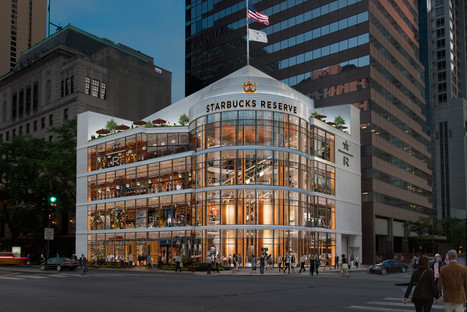

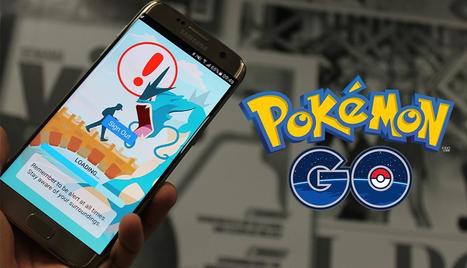

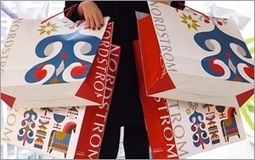



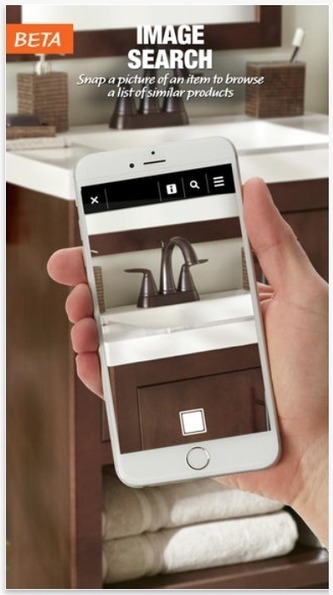
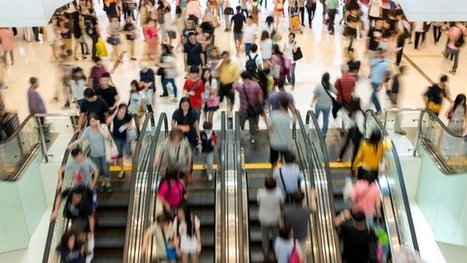









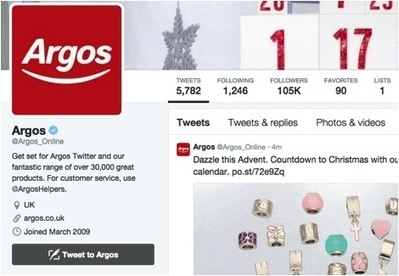
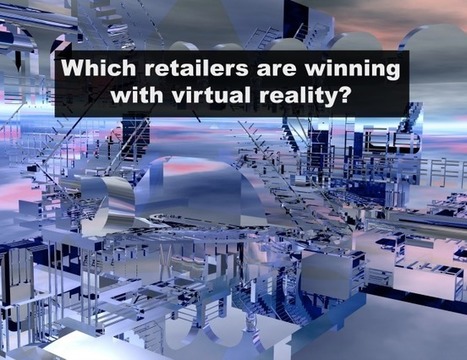

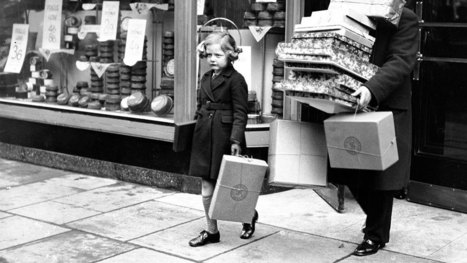

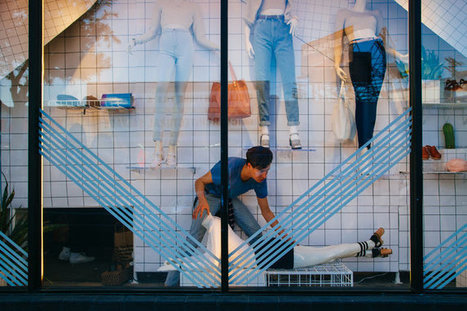
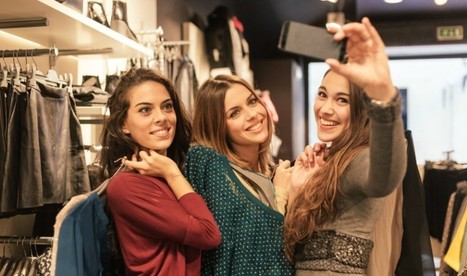


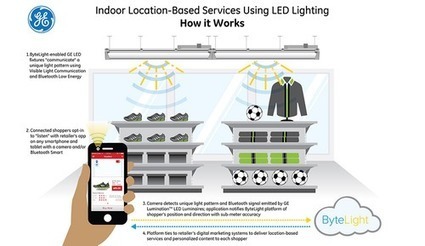


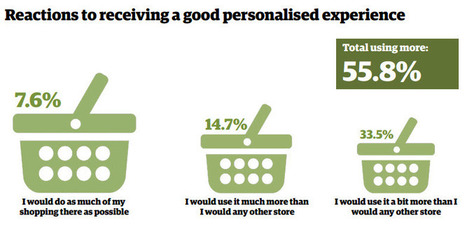
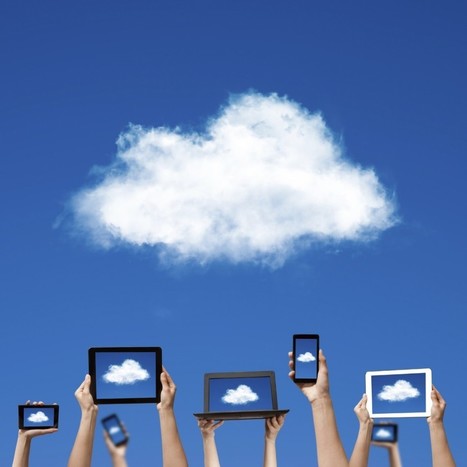
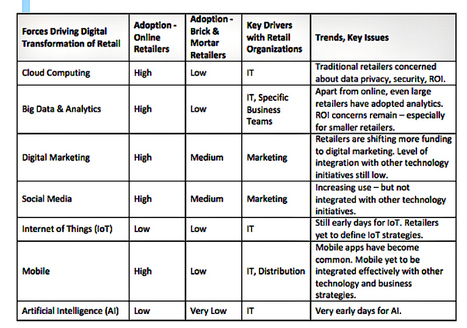





Four storey coffee Roastery dream for Starbucks lovers. Mmmmmm.